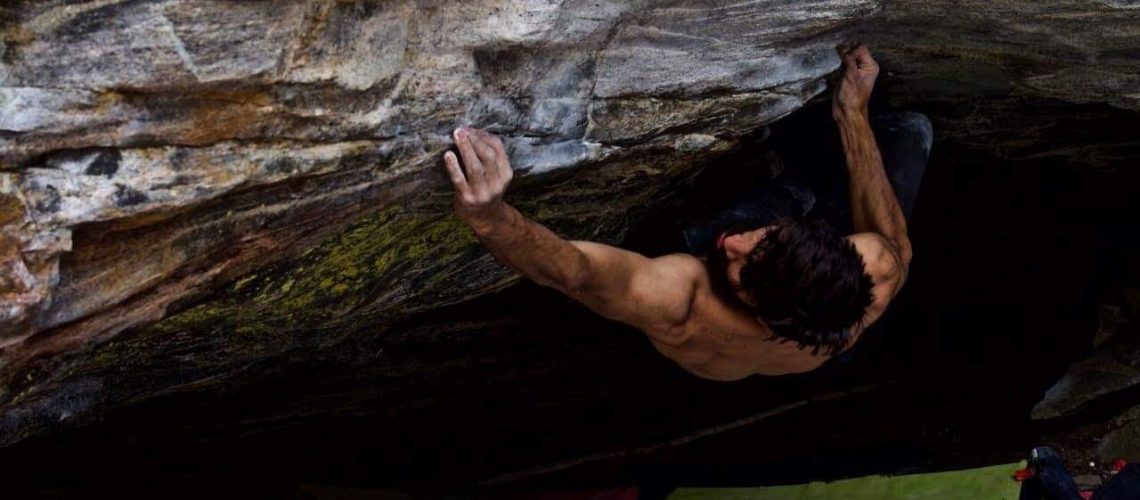Shoulder Rehab 2
By Christy Mader

Once you have gone through the Neck/Shoulder Rehab 1 exercises and you are able to move your shoulder and connect with your stabilizers a bit more, you are ready to increase the load. I have found it important to strengthen my shoulders in a similar position that I want to stabilize my shoulders while climbing. The cueing can vary from person to person. The most common cue that I give, and that I use myself, is to open the chest or extend your T-spine. This corrects internal rotation of your shoulders and, based on assessments at the clinic, improves many climbers’ function in their shoulder exercises (i.e., feels more stable and strong with less pinching).
It’s common for climbers to complain about issues with their rotator cuff, especially Infraspinatus, which does external rotation and stabilizes the shoulder joint while reaching, and Supraspinatus (see Shoulder/Neck Rehab 1 for a related exercise). Here is a progression of external rotation exercises starting with the easiest and progressing to a challenging functional movement we do while climbing. All of these should be pain free.
For the last exercise, people who are climbing 12+ or above on a rope or bouldering V7 or above should be able to perform this exercise with around 3 sets of 10 at 8 to 10 lbs (this number is based on a small sample size, so consider this just a guide). If you can’t, you need to build more shoulder strength to perform the “shouldery” moves you are required to do at those grades.
This next group of exercises that we just saw incorporates upward scapular stabilizers with arm movement. It’s hard to completely isolate muscles that act on the shoulder, but in the last three exercises in the video, you want to feel your Serratus Anterior (on the side of your rib cage) and Lower Traps, not just your Upper Traps. The three exercises are Wide arm raises with a band, Wall Walkers (thanks Tony Gentilcore for this one), and the block against the wall (harder than it looks for those who lack mobility in your shoulder). Some people find that one exercise works better than another. You don’t have to do all three; just pick your favourite.
The next two exercises look at Tricep strengthening. Some climbers with elbow pain find these helpful. Feel free to read over the Finger Rehab 1 and Finger Rehab 2 posts to go over other exercises that help with elbow pain. The two exercises I like based on EMG patterns (from a small sample size) are Skull Crushers (also train Upper Traps isometrically) and supinated (palm-up) Tricep kick backs. Training Triceps in supination has been very helpful for me in balancing out Pronator Teres, which is often tight on climbers and can aggravate elbow pain. If you find this mimics your elbow pain in a dull, achy kind of way, this is a great exercise to help rehab your elbow. A lot of people think of Triceps as an antagonist muscle, which it is to some extent, but as you progress in the grades you need to be able to lock off and then push from the locked off position, which uses your Triceps. Check out these two exercises:
With all of these exercises, you can play around with reps and sets. If you are doing band work, make sure your last rep is challenging. If you do your band exercises and your last rep feels as easy as your first rep, you need more resistance. Without enough stimulus, the muscles won’t need to adapt (get stronger) since the load isn’t challenging enough. As your shoulders get stronger and can tolerate more load with a combination of band work and free weights, you will be able to start working toward complex movement patterns and heavier lifting for your shoulders. Those exercises are coming up in Shoulder Rehab 3.
Photo: Tosh Sherkat on “Just Go Climb” V10. Credit Kim and Graham McGrenere.

